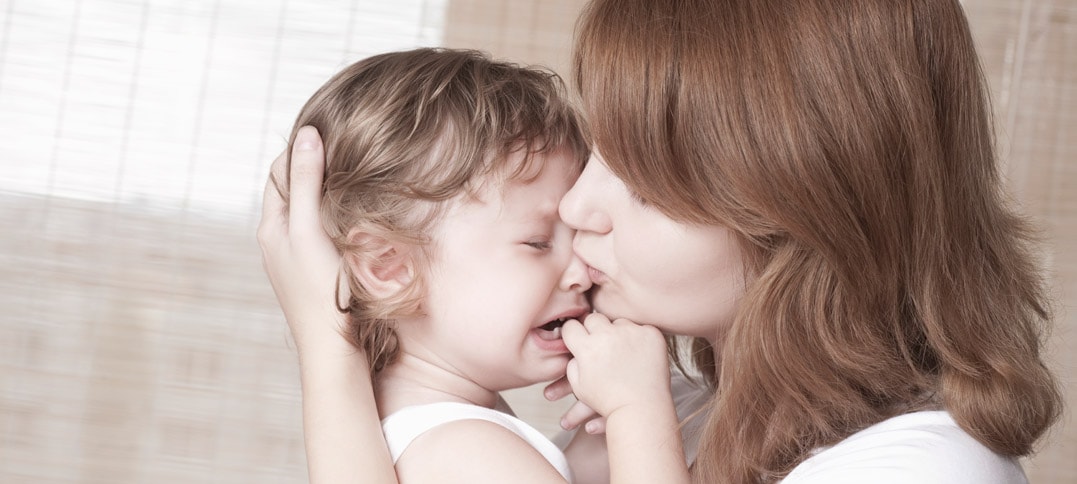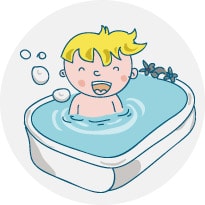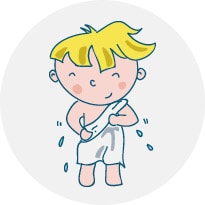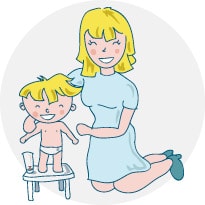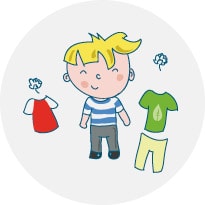Nutratopic Pro-AMP Extended control for atopic skin
Relieves itchiness, prevents scratching and breaks the vicious cycle
Estás a punto de abandonar la web de ISDIN para ir a un espacio privado para profesionales de la salud. ¿Quieres continuar?
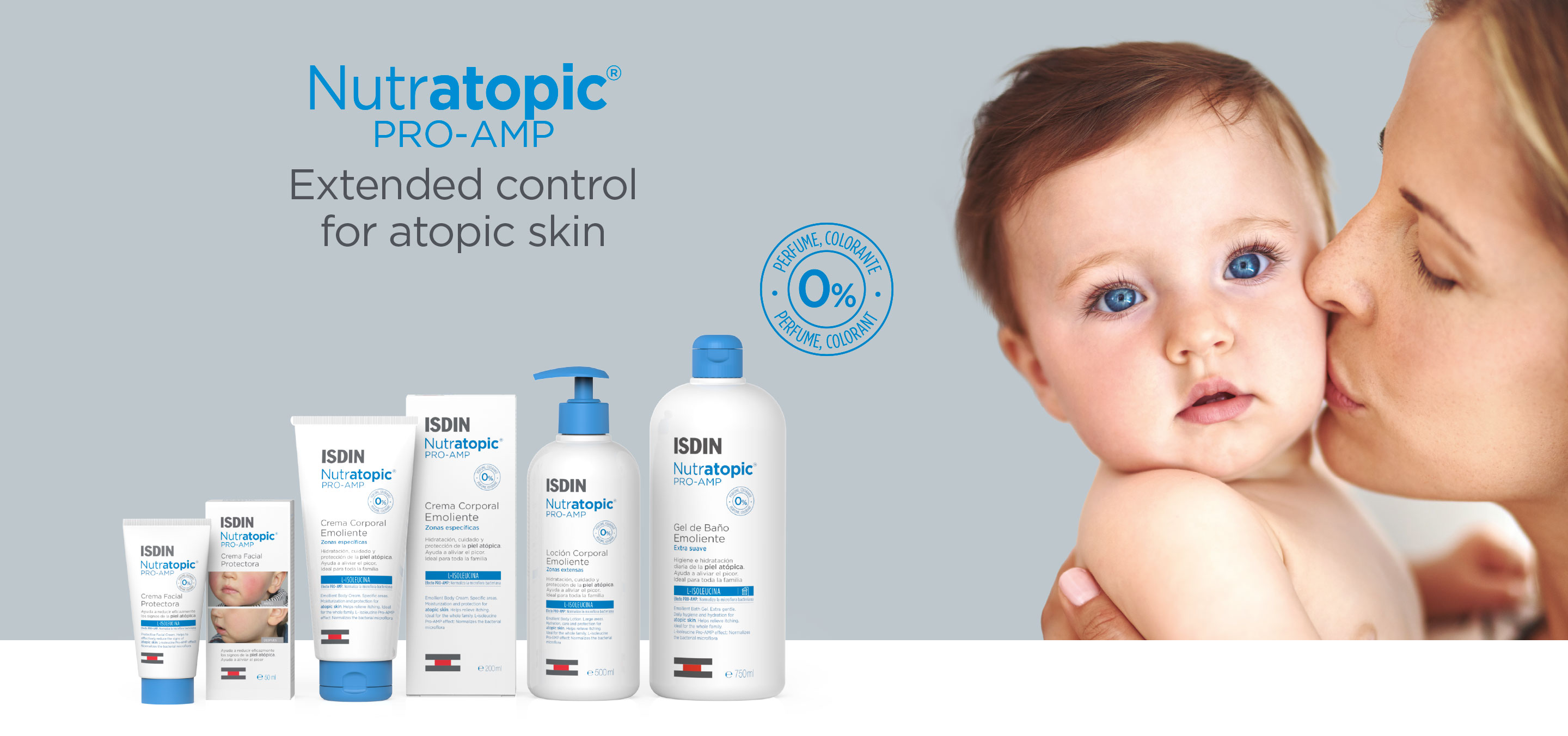
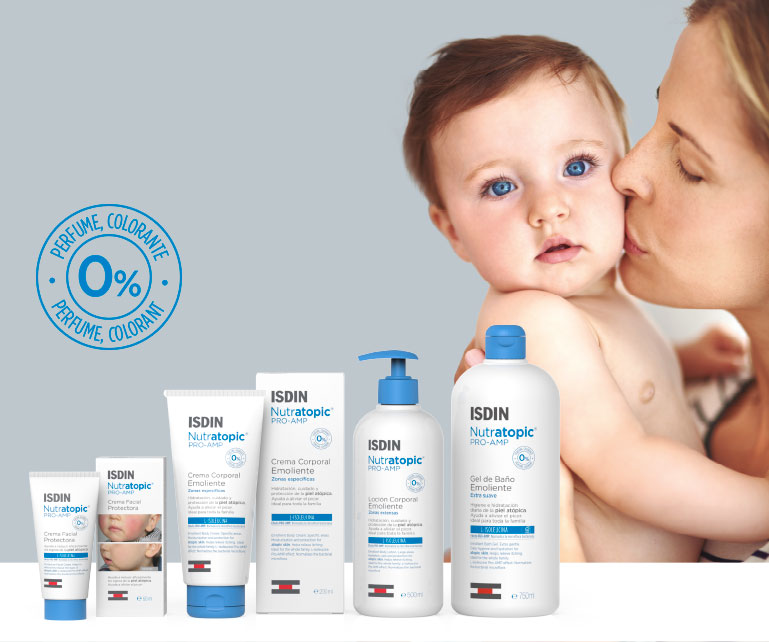
Relieves itchiness, prevents scratching and breaks the vicious cycle
Atopic Dermatitis is an inflammatory disease of the skin characterised by red and dry skin that causes itching and scratching. Benign and not contagious.
Chronic and increasingly present. Its prevalence has multiplied 2-3 times in the last 30 years, due to environmental factors and the increase in irritant products.
It occurs during outbreak and inter-outbreak periods. We use the term ‘outbreak’ when the disease is manifesting itself in full swing in periods of remission, we use the term ‘inter-outbreak’.
It itches enormously, becomes inflamed, and you never know when it is going to appear. The child sleeps badly and cannot concentrate at school. You can see the blemishes on his face and outbreaks make him anxious. It even affects the parents, who feel powerless and exhausted.
Prevalence
5%
in the global population
Prevalence
20%
in kids
Appears before
1
year in 60% of cases
Appears between
0-5
years in 85% of cases
Atopic dermatitis is often not an isolated phenomenon. It can occasionally lead to other problems such as asthma and food and respiratory allergies.
As well as skin atopy, respiratory atopy may also manifest in the form of asthma, or digestive tract atopy which manifests in the form of food allergies. This is known as the atopic march.
There are studies that show that a child with a controlled atopy is less likely to present this kind of complication.
ISDIN has a holistic solution with specific products for each moment and each area to maintain atopic skin under control for longer. With integral treatment we obtain optimal management of atopic dermatitis, reducing the severity of outbreaks and lengthening the periods of remission.
Say goodbye to tears! With Nutratopic PRO-AMP, we have saved many families from the suffering and tears of their children with atopic skin.
Our Tear Savings Bank gets fuller every day, and that means more happy babies and children and less stressed moms and dads.
Bath, clothing, cleanliness… Everything can effect the quality of life of atopic patients. Some simple tips will help you in your daily skincare.
1
Bathing
Bathing is necessary but it can dry out the skin if you don’t take certain precautions. Always use special products for atopic skin, which don’t have soap and prevent skin from dehydrating. Keep bath-time short and use lukewarm water (30° – 35°). For older children, a shower is better than a bath. Avoid using sponges and scrubbing the skin.
2
Drying
When drying off, make sure to avoid irritating the skin. Pat dry carefully with a cotton towel. Be especially careful with folds.
3
Moisturising
Proper moisturising is key to caring for atopic skin, as it helps decrease the number of outbreaks and the need for medical treatment. Apply emollient cream in the most problematic areas and moisturising lotion to the rest of the body.
4
Clothes
Avoid wool and certain synthetic fibres. Use cotton or linen garments. Use a gentle detergent to wash clothes, rinse well and avoid fabric softeners.
5
At home
Allergens (such as dust mites) at home can trigger an atopic outbreak or make one worse. Air out bedrooms daily and avoid items that collect dust, such as rugs, stuffed animals and down bedding.
6
Winter
Cold, dryness and heating make atopic dermatitis worse. As a result, symptoms may be more noticeable this time of year. Keep the temperature between 20°-22° at home and be extra careful to properly moisturise daily.
7
Summer
La dermatitis atópica generalmente mejora con el sol y la playa. Los baños de agua de marpueden ser muy beneficiosos. Ten precaución con el sol y utiliza cremas específicas con FPS 50+. El cloro de las piscinas puede secar la piel. Es recomendable que el baño sea corto, acláralo en la ducha inmediatamente después y aplícale una loción hidratante.
8
Awareness
As your child grows up, it will be important for them to take control of managing their dermatitis. Teach them how to avoid outbreaks, remind them periodically and help them control the need to scratch when their skin itches.
